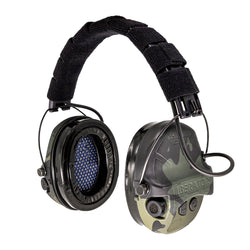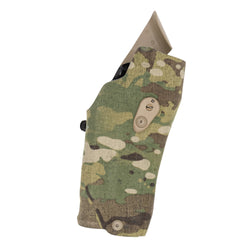Whether you’re a duty professional or a prepared citizen, carrying a tourniquet — every day — is never a bad call. Emergencies don’t give warnings, and when seconds matter, having the right tool on hand can mean the difference between life and death.
In our day and age, we benefit from decades of research, hard-earned lessons, and real-world data. Pre-hospital tourniquet use for extremity trauma has consistently been shown to improve survival rates when applied early. Studies show reduced mortality, low complication rates, and even a decreased need for blood transfusions.

In earlier articles covering Baer Solutions’ Medical Applications Course, we broke down the M.A.R.C.H. algorithm and the body’s trauma responses — timers and switches. Now we shift focus to something even more foundational: carrying a tourniquet as part of your everyday loadout.
If You Carry a Firearm, You Should Carry a Tourniquet
Jason Reed, instructor at Baer Solutions, puts it plainly:
“If you’re going to carry a firearm, you should be able to carry medical gear and be proficient and competent in using it.”
Statistically speaking, you’re more likely to encounter a medical emergency than a violent encounter requiring a firearm. That makes carrying a tourniquet—along with the knowledge to use it—a smart and responsible move.
Consider the range of common emergencies: a vehicle accident, a workplace injury, a serious fall while hiking, or even something as random as a deep cut at a family BBQ. In moments like those, a tourniquet can be the difference between life and death.
A Tool for Civilians and Cops Alike
Tourniquets aren’t just for combat or duty use. They’re for anyone who may be first on the scene—which often includes law enforcement. Paul “Doc” Pollack, lead instructor, explains:
“A lot of times law enforcement is first on scene primarily because they’re out and about… so them being able to do the medical skills and not waiting for EMS and fire to arrive is really crucial in survivability.”

Many officers may go their entire careers without firing their weapon, but they often have multiple opportunities to save lives with medical gear.
Nick Armanino, a law enforcement professional who participated in the class shown in the video, echoes that reality:
“What’s more likely… a medical issue or a gunfight? Could they both happen the same day? Absolutely. But you could be coming home from work and turn the corner and there’s a motorcyclist on the ground who needs a tourniquet. You’re probably more likely to get into a medical situation than a firearm situation.”
That mindset extends beyond the badge. Tristen Mayfield, another law enforcement student in the course, puts it this way:
“I’m a big outdoors guy, so if I’m out in the backcountry, I always have medical gear on me. You fall off a trail, get impaled, or cut down to the bone — you’ve got to stop the bleeding. It’s not just for cops or military. Everybody needs this.”
And as student Brian Delap adds:
“Not everybody has the same mindset that law enforcement does—and they’re not expected to. But bad can happen when you least expect it, and the more prepared you are, the better.”
What To Carry — and Where To Get It
The tourniquet of choice recommended by Baer Solutions instructors is the CAT Gen 7. Be sure to get it from a reputable dealer — especially if you’re shopping online — because counterfeit or low-quality products are common and hard to spot.
Expect to spend $20–30 per tourniquet, and be sure to get a separate training model so you can practice regularly without compromising the integrity of the one you carry for real emergencies.
As Brian Delap points out,
“It’s relatively inexpensive for what it can do. It’s worth it if it saves your life or someone else’s.”
You’ve probably heard the mantra, “One is none, two is one.” That applies here, too. Carry one for self-aid and another for your partner or a bystander. Make sure it’s carried somewhere you can access it quickly when seconds count.

Train Like Lives Depend On It — Because They Do
Carrying a tourniquet is only part of the equation. Just like with your firearm, knowing how and when to use it is everything. Medical preparedness means committing to regular, realistic training and integrating that readiness into your everyday life.
Baer Solutions’ Medical Applications Course is designed to give you those skills, whether you’re a first responder or a citizen who wants to be ready. Upcoming sessions are available — visit Baer Solutions’ course schedule for more details.

Up Next
So far in this five-part series, we’ve looked at trauma care fundamentals and the physiological reality of emergencies. The final step is action: make sure you have the tools and training to save a life when the moment finds you.
Stay tuned for the fourth installment of this series: How To Apply a Tourniquet.









